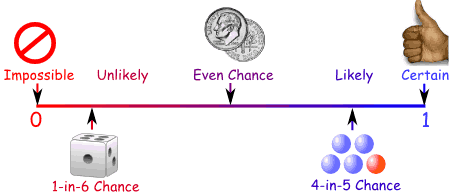[tooltip tip=”Toscanini’s Fumble, 1988, pp. 93-112″ placement=”right”]Neurologist Howard Klawans[/tooltip] presents an interesting case with a clear example of how we use probabilities in our thinking.
Klawans’s patient, a young man, suffered from Huntington’s disease. He attended the doctor with his mother. Huntington’s chorea is a disease carried on a dominant gene which does not present its symptoms until adulthood. Children of those suffering from Huntington’s chorea have a 50:50 chance of inheriting the gene and therefore experiencing the disease.
The mother did not have the disease. The young man’s father was already deceased of an accident, but his family history showed no ancestors with Huntington’s. She wanted Dr. Klawans to approve her explanation that her son’s case was a spontaneous mutation in a gene.
At the time of his writing (1988), a lone study estimated that there was a one in a million chance that a spontaneous mutation occurred in a parent’s gamete, leading to Huntington’s chorea. Almost all cases were due to the genetic heritage from the parents, but there was this other way, this one in a million chance.

Presented with a case of Huntington’s disease, Klawans expected to find a family history of the disease. Coming across this case that had no such family history, Klawans did not conclude that the one in a million mutation had taken place. He simplified and ignored that sliver of a chance. Rather, assessing the odds of adultery as much greater than one in a million, he concluded that a sexual relationship outside the marriage occurred with a person who carried the disease.
His decision-making process took place in the face of uncertainty. There remained a chance that the conclusion was wrong, that a spontaneous mutation had occurred, but the odds were extremely unlikely.
Two days after the difficult conversation between doctor and mother, she wrote Klawans that he was right. She had had an extra-martial affair with a person who had Huntington’s disease.

Later in the same book (p 176), Klawans gives this nice example about we sometimes change word meanings to adapt to new information.
“Over the past twenty years I must have seen at least one person each week who had whar is usually classified as a rare disease. When a second patient arrives in my office that same week with the same disease, I consider that to be no more than a coincidence. And when the third one shows up, I usually assume the disease is not as rare as I had been lead to believe.”